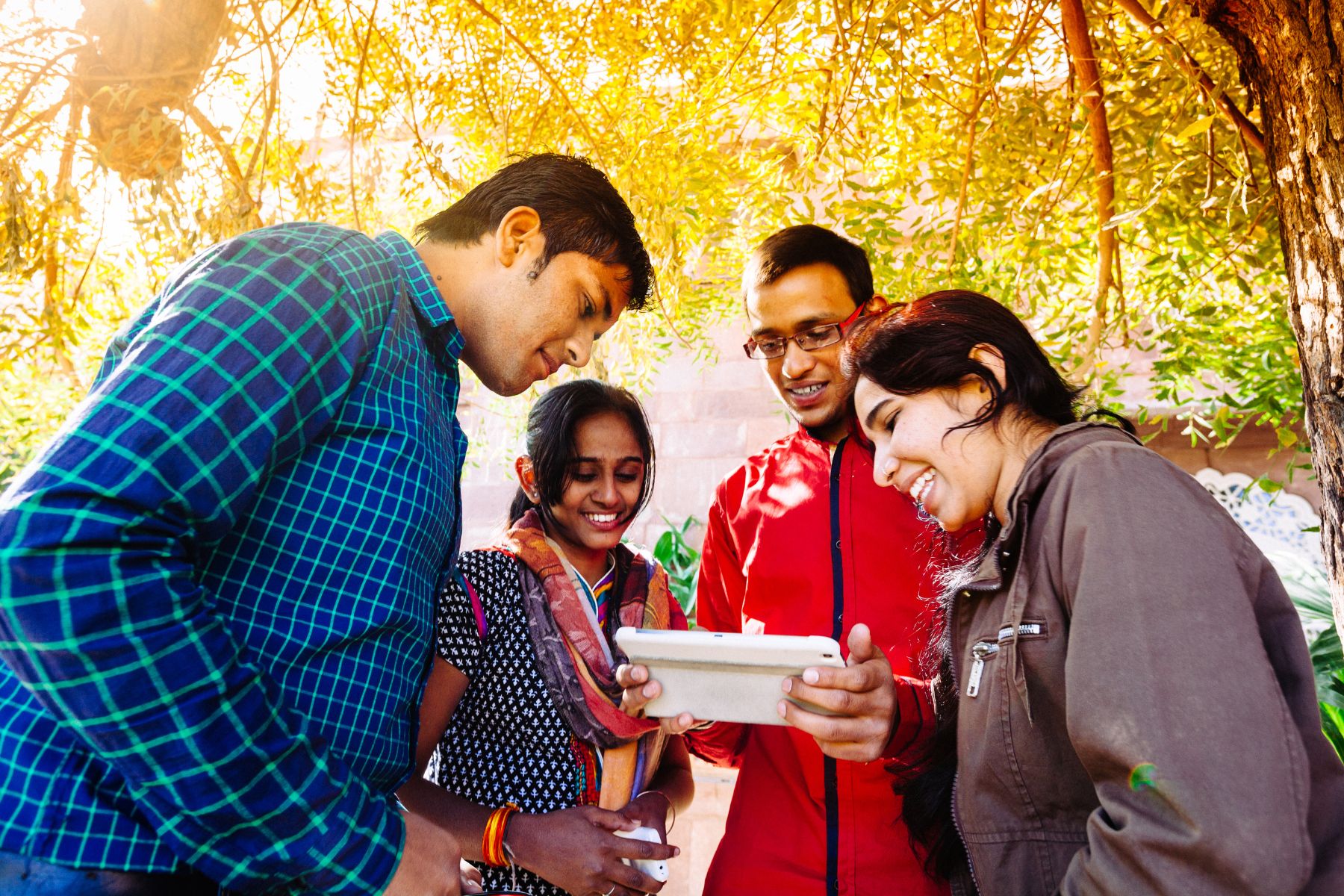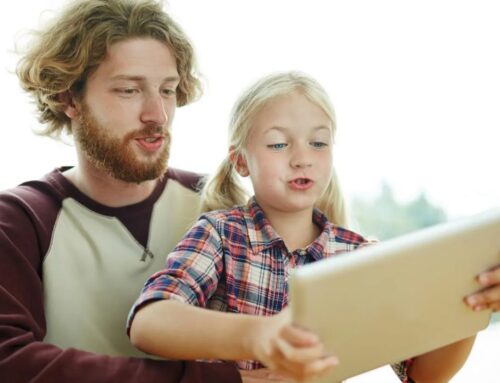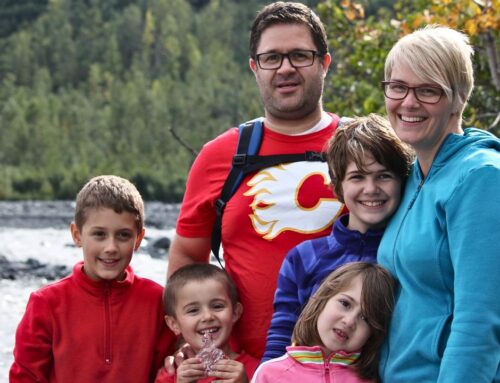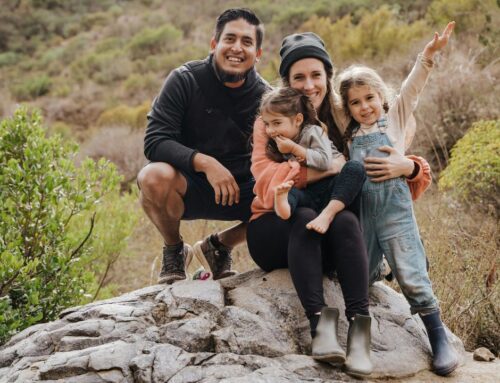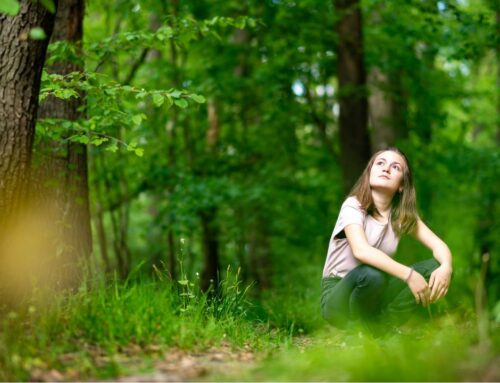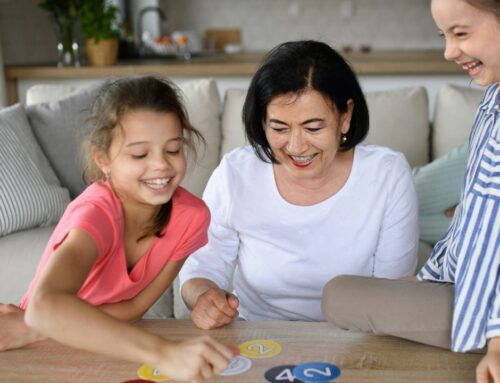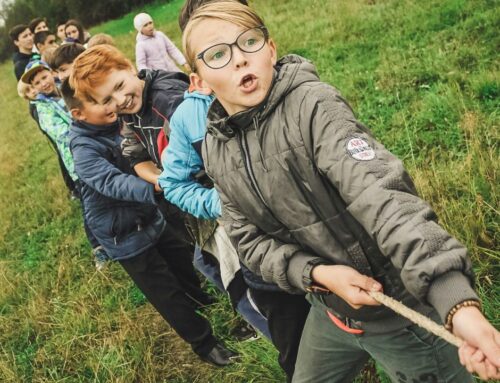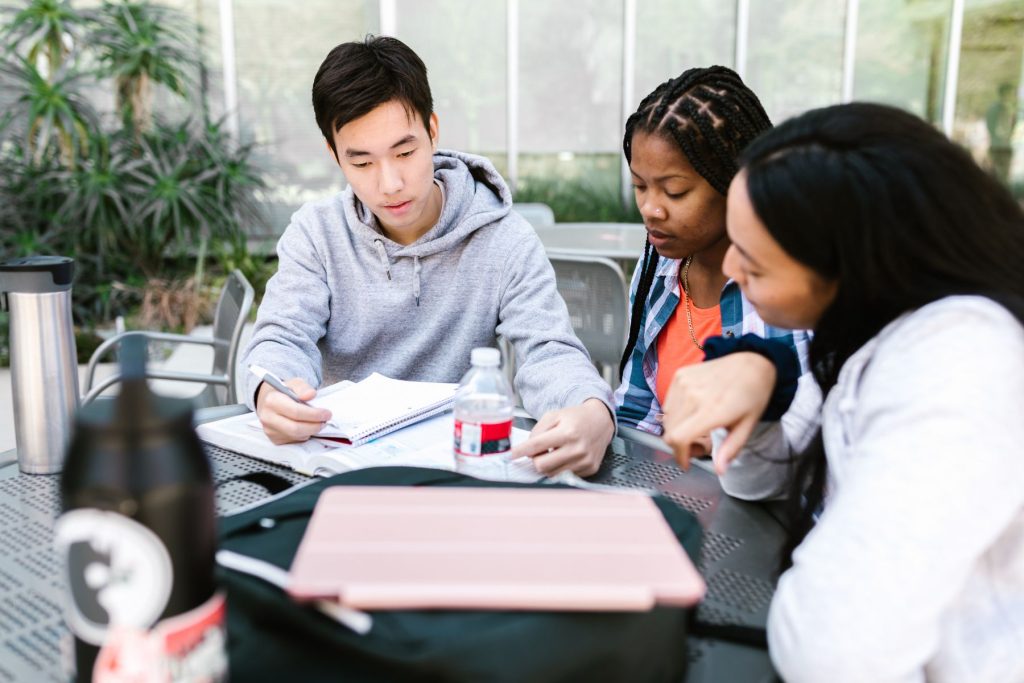 At SelfDesign, each learner contributes to a portfolio that showcases and celebrates their own learning and achievements throughout the year.
At SelfDesign, each learner contributes to a portfolio that showcases and celebrates their own learning and achievements throughout the year.
“I like to call it the pot of gold at the end of each semester,” says Educational Program team lead Janice Green. “We introduce the process in the fall, and learners add to it throughout the semester. At the end of the semester, they have this fantastic collection of material that showcases their learning, interests, and passions, demonstrating how the learner has grown.”
Portfolios have a very practical function at SelfDesign.
“They are a key tool for documenting a child’s learning and how they are progressing towards meeting the goals outlined in their personalized learning plan,” says Educational Program Coordinator Anita Levesque, who works with Janice on the Educational Program team. “Portfolios are an integral part of the learning experience for SelfDesign learners and families.”
From week to week, learners and their parents or caregivers upload photographs, videos and other artifacts that illustrate the learning that occurs as the learners explore their own interests and passions. Learners and families are encouraged to point out highlights, challenges, artifacts created, and learning they are proud of.
The artifacts and accompanying notes and comments contribute to and, in part, form the basis of the weekly Observing for Learning process. During Observing for Learning, learners and family meet weekly with their learning consultant to share, discuss and reflect on the learning that occurred in the previous days.
And at key points during the learning year, the learning consultant and, for learners in grades 10 to 12, learning specialists use the artifacts and materials within the portfolio and the Observing for Learning meetings to assess the learning that has taken place and to map it to the BC Ministry of Education and Child Care’s curriculum competencies.
“If a learner is in grade 10 to 12, and one of their goals is to finish grade 12 with a Dogwood Diploma (BC High School Graduation Certificate), the learner can use their portfolio to demonstrate they’ve met the curriculum requirements,” Janice says. “We share those requirements with our grade 10 to 12 learners to help them, if they choose, plan how they’re going to meet those goals. And the learning consultant and learning specialists tailor their support to help the learner achieve their goals as the learner builds their portfolios.”
Portfolios evolve as a child grows
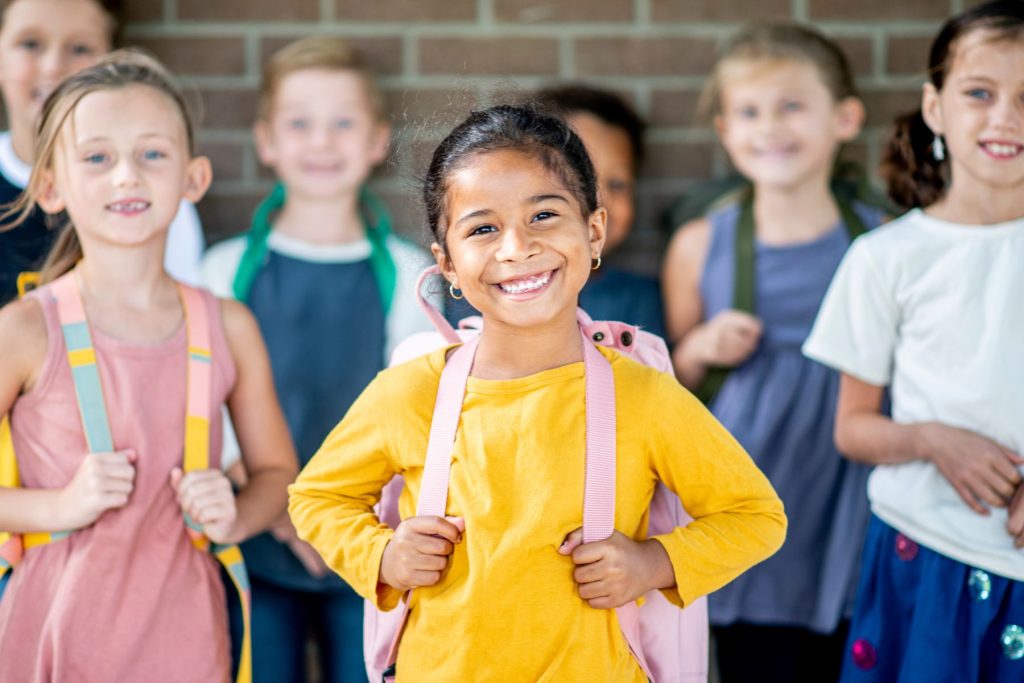 Kindergarten to grade 9
Kindergarten to grade 9
In kindergarten to grade 9, the portfolio is actually the entire Observing for Learning space.
As a child grows and matures, the way they engage with their learning and interact with their portfolio evolves.
“In most cases, learners in kindergarten to grade 5 focus fully on exploring their own interests, while the child’s parent, support provider and learning consultant — the child’s learning team — contribute to the weekly Observing for Learning, which acts as the portfolio,” Anita says.
As a learner grows older and more independent, most become more involved in the process, engaging and developing the skills to reflect on and assess their own learning.
Learners in grades 6 to 9 might contribute to their Observing for Learning by choosing what is shared and selecting which artifacts to add to the portfolio. A learner may start to submit their own reflections on their learning. They might start to enrich the portfolio with their own examples of learning experienced during, for instance, one of the SelfDesign themes, add-on or live offerings they have chosen to take part in. They may take their own photographs or videos and upload those to their portfolio themselves. Or they may submit their reflections on any learning experiences or events they took part within their local community.
Grades 10 to 12
When learners start grade 10, their portfolio and the process to curate it develop further. These older learners take on the role of building, curating and developing their portfolios themselves. The help of educational assistants, learning consultants and tutors is always welcomed.
“What motivates a learner is reflected in the portfolio at all ages, but most especially in grades 10 to 12,” Anita says. Our personalized learning approach, our unique curriculum, and the opportunities we offer within our grade 10 to 12 theme-based and add-on courses, as well as any activities the learner takes part in their community, provide learners with many opportunities to share and reflect on their learning and to add to their portfolios.
“Each portfolio is truly unique and learner specific,” she says. “It considers the learner’s chosen path to completion, the courses they have selected and their own personal motivations and goals for choosing each of those courses.”
The portfolio process as learning
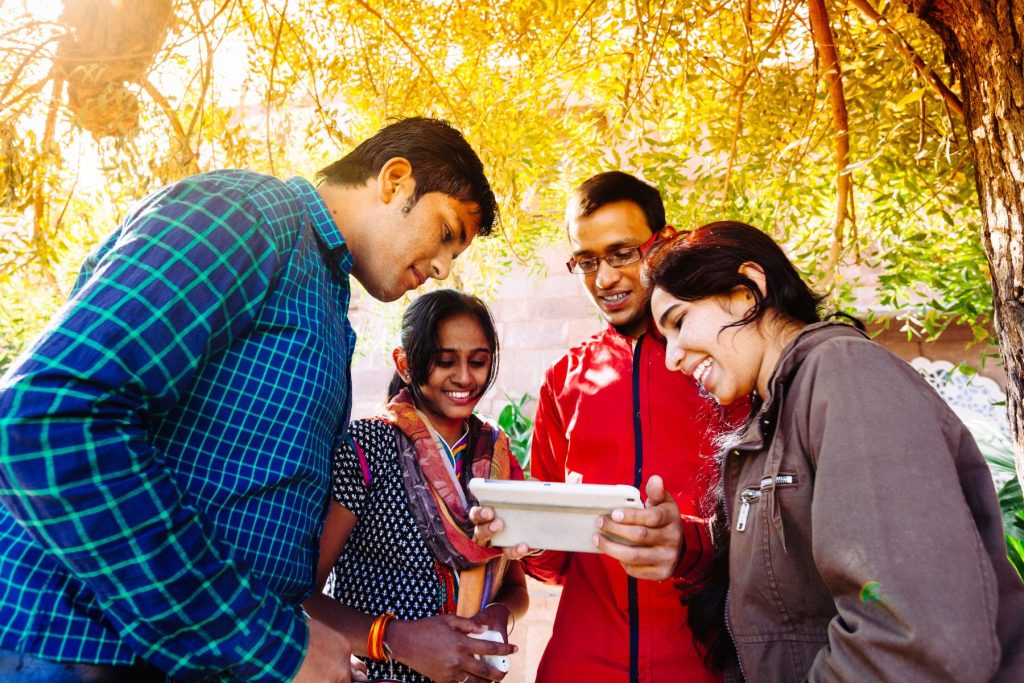 The process of building a portfolio — of deciding what material to add to it — is as important as what is actually added.
The process of building a portfolio — of deciding what material to add to it — is as important as what is actually added.
“Some use it to showcase the learner’s best work,” Janice says, “but I like to encourage people to put in the learner’s most valued work as well — the activities or projects they really enjoyed or where they really improved over the course of the activity or project.”
But she says learners in grades 10 to 12 are asked to dig more deeply into those choices and how the learners decide what to include in and what to leave out of their portfolios.
Self-reflection is a big part of the process.
“We ask learners to examine their own learning and their portfolio-curation processes,” Janice says. “With every decision they make in curating a portfolio, the learner also demonstrates what their own learning process is for them as an individual, and also how they see and understand their own learning process.”
The self-awareness that develops, and its influence on the materials selected and how they’re presented, leads to a rich, multi-layered, multi-faceted, thoughtful showcase of the young person’s learning. Janice says this, in turn, often results in higher grades, an important consideration for our grade 10 to 12 learners who seek a Dogwood Diploma and are considering post-secondary studies.
Learners are supported through that process. For example, every fall, learning consultants and learning specialists walk their learners through what a portfolio is, what its purpose is, and how learners build them. In addition, Janice offers hands-on workshops that guide learners through building a portfolio and help them understand what their educators are looking for and what they should be looking at during the curation process.
“I also do one-to-one sessions with learners who have hesitation building their portfolios,” Janice says. “I’ll meet with a learner and even their parents for a one-on-one working session where I walk them through the entire curation and construction process and get them started.”
A showcase and celebration of learning
 Portfolios are also an opportunity for learners to share how they’ve developed their interests and learned more about how they learn.
Portfolios are also an opportunity for learners to share how they’ve developed their interests and learned more about how they learn.
Some families share the portfolio with grandparents or other family members. By exploring the reflections, connections and project artifacts the learner has submitted and how they relate to the learner’s personalized learning plan, family members who are less involved in the SelfDesign process can better appreciate the depth and breadth of learning that has occurred.
“If you are passionate about a subject and have chosen to go deeper into your learning in a particular area, we encourage you to showcase this in your portfolio,” Anita says.
“The portfolio shows the learner’s growth, it shows their passion,” Janice says. “The things that show up in those portfolios— they just astonish me every time. They’re absolutely incredible!”
Read more about our Observing for Learning process
Learn how we reflected on and assess learning at SelfDesign
Read about a few of the projects our learners have engaged in and showcased in their portfolios:

